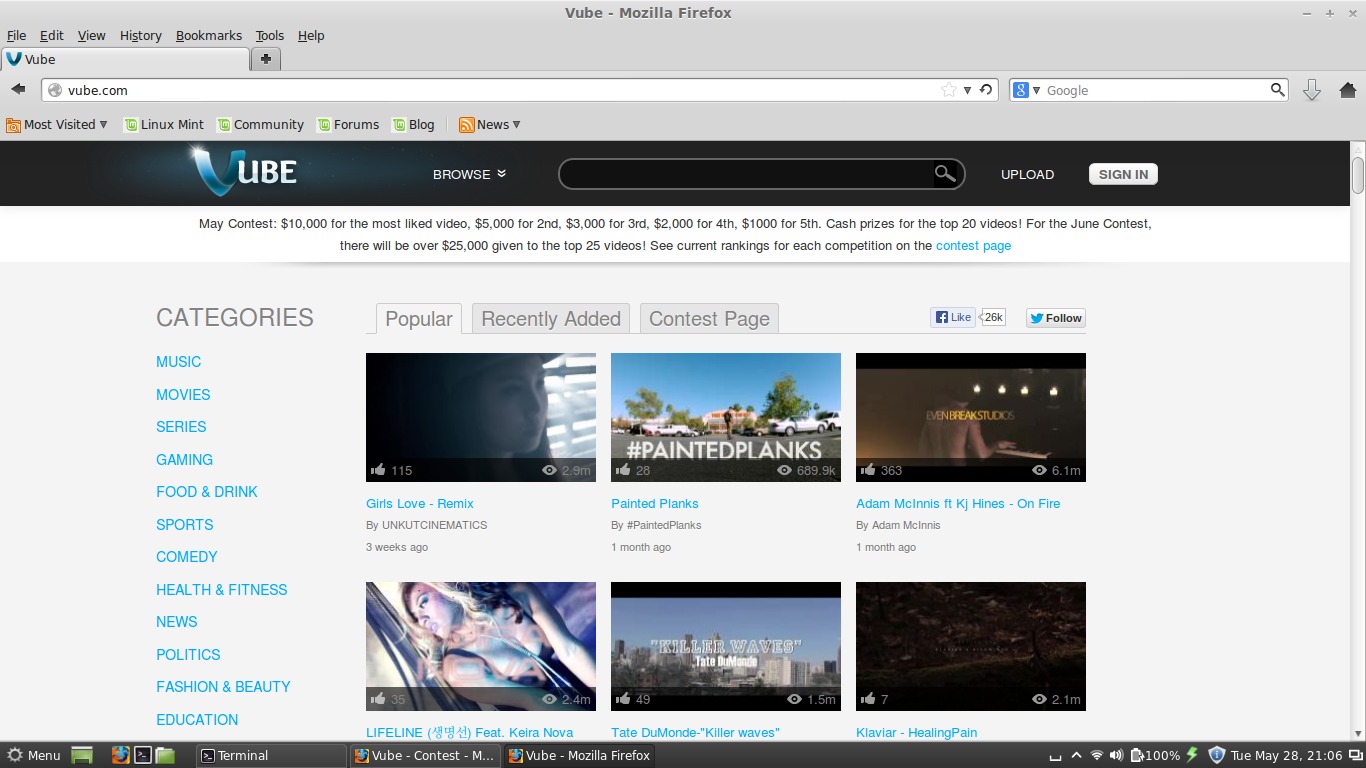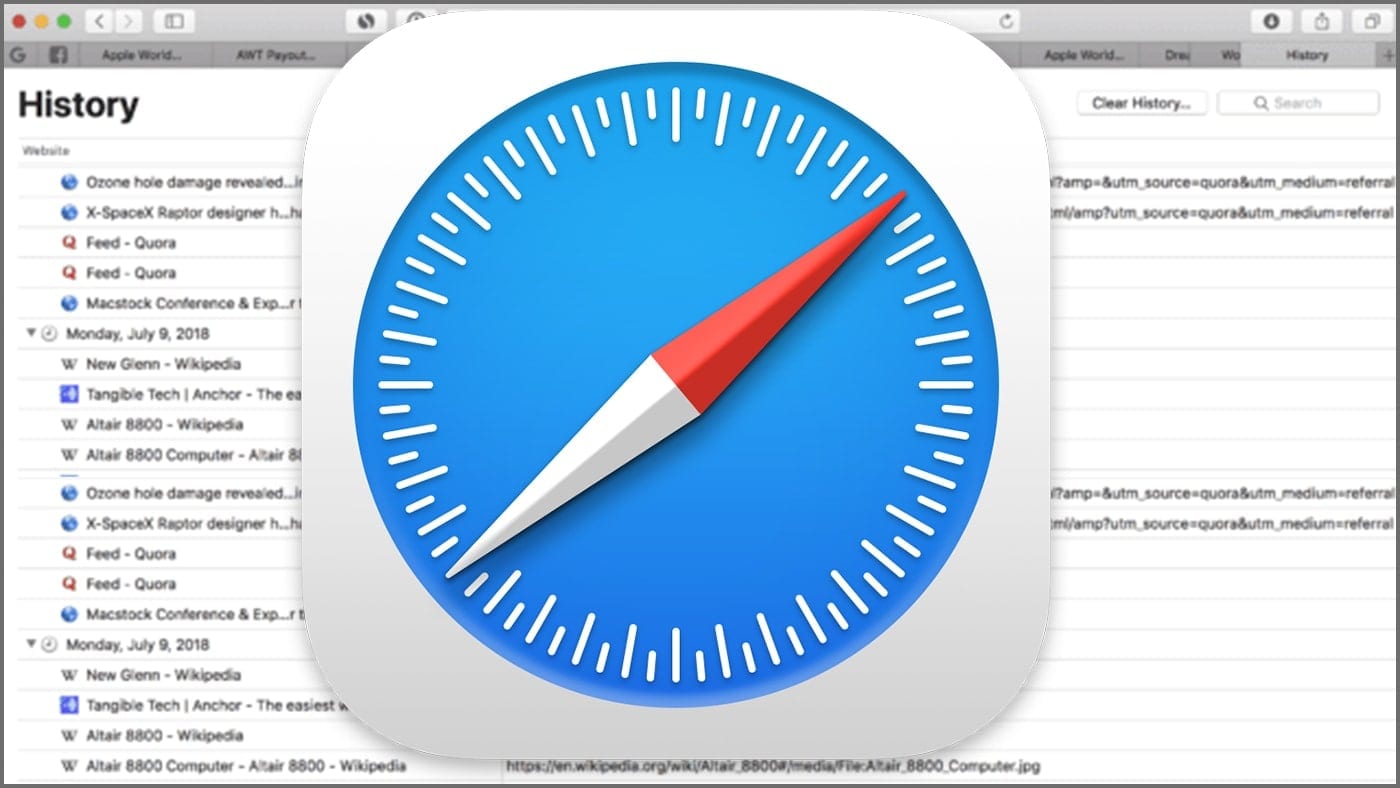Introduction
The back button is a fundamental feature of web browsers, allowing users to effortlessly navigate through their browsing history. In Safari, Apple's widely used web browser, the back button has undergone several changes over the years, prompting curiosity and sometimes frustration among users. Understanding the evolution of the back button in Safari, as well as the recent alterations and user reactions, is crucial for anyone seeking to optimize their browsing experience.
The back button serves as a virtual time machine, enabling users to revisit previously viewed web pages with a simple click. It embodies the essence of seamless navigation, empowering users to effortlessly backtrack through their online journey. However, the functionality and appearance of the back button have evolved significantly since the early days of web browsing.
As technology continues to advance, web browsers strive to enhance user experience by refining their features, including the iconic back button. In Safari, these changes have sparked discussions and debates among users, as each alteration brings forth a new set of benefits and challenges.
Understanding the history of the back button in Safari, the recent modifications, and user feedback is essential for harnessing the full potential of this vital tool. By delving into these aspects, users can gain valuable insights into optimizing their browsing experience and mastering the art of seamless navigation in Safari.
The History of the Back Button in Safari
The back button in Safari has a rich history that reflects the evolution of web browsing. When Safari was first introduced by Apple in 2003, the back button was a simple yet essential feature that allowed users to navigate backward through their browsing history. This initial iteration of the back button served as a reliable tool for seamlessly retracing one's online footsteps.
As web technology advanced, so did the functionality of the back button in Safari. With the release of subsequent versions of the browser, Apple introduced refinements to the back button, aiming to enhance user experience and streamline navigation. These updates included improvements in responsiveness, visual design, and overall usability, ensuring that the back button remained a cornerstone of Safari's user interface.
In the early stages of Safari's development, the back button primarily served the purpose of enabling users to revisit previously viewed web pages. However, as the internet landscape evolved, so did the role of the back button. Safari's back button adapted to accommodate the complexities of modern web browsing, such as handling dynamic content, AJAX requests, and single-page applications, ensuring that users could navigate seamlessly across a wide array of online experiences.
Furthermore, the integration of new features and functionalities into Safari brought about changes to the back button's behavior. For instance, the introduction of tabbed browsing and gesture-based navigation in Safari influenced how users interacted with the back button, prompting adjustments to its functionality to align with these innovations.
Over time, the back button in Safari has evolved from a basic navigational tool to a sophisticated component that caters to the diverse and dynamic nature of the modern web. The history of the back button in Safari reflects a continuous effort to adapt to the evolving needs of users and the ever-changing landscape of web technology, solidifying its status as a vital element of the browsing experience.
Understanding this historical evolution provides valuable context for appreciating the significance of the back button in Safari and the pivotal role it plays in facilitating seamless navigation through the digital realm.
Changes to the Back Button in Safari
The back button in Safari has undergone notable changes over the years, reflecting Apple's commitment to refining the browsing experience. These changes have encompassed both functional and visual aspects, aiming to align the back button with the evolving dynamics of web content and user interaction.
One significant change to the back button in Safari involved its adaptability to the introduction of tabbed browsing. With the proliferation of tabbed interfaces, users began to navigate through multiple web pages simultaneously. In response, Apple integrated tab-specific back button functionality, allowing users to navigate backward within each open tab independently. This enhancement streamlined the browsing experience, empowering users to manage their browsing history more effectively within individual tabs.
Furthermore, the evolution of touch-based interactions on Apple devices prompted adjustments to the back button's behavior. The introduction of gesture-based navigation, such as swiping to navigate backward or forward, influenced the functionality of the back button in Safari. Apple optimized the back button to complement these intuitive gestures, ensuring a seamless transition between traditional button-based navigation and touch-based interactions, thereby catering to the diverse preferences of users across different devices.
In addition to functional changes, Safari has also witnessed visual refinements to the back button. As part of Apple's design evolution, the appearance of the back button has been subject to updates aimed at enhancing its visibility and intuitiveness. From subtle alterations in size and placement to the incorporation of visual cues for enhanced user feedback, these visual changes have contributed to a more cohesive and aesthetically pleasing browsing interface.
Moreover, Safari's compatibility with various web technologies and standards has influenced the behavior of the back button. The browser's adaptation to dynamic web content, including AJAX requests and single-page applications, has necessitated adjustments to the back button's functionality to ensure seamless navigation within these contexts. Apple's commitment to optimizing the back button's performance in handling diverse web experiences underscores its dedication to providing users with a consistent and reliable browsing tool.
These changes to the back button in Safari reflect Apple's responsiveness to the evolving landscape of web browsing, user behavior, and technological advancements. By adapting the back button to align with modern browsing paradigms and user expectations, Apple has demonstrated its commitment to enhancing the overall browsing experience in Safari, solidifying the back button as a cornerstone of seamless navigation in the digital realm.
User Reactions and Feedback
The changes to the back button in Safari have elicited a diverse range of reactions and feedback from users across the globe. As with any user interface modification, the alterations to the back button have sparked discussions, debates, and, in some cases, passionate responses from the Safari user community.
Many users have expressed appreciation for the adaptability of the back button to the evolving dynamics of web browsing. The integration of tab-specific back button functionality has been particularly well-received, as it empowers users to manage their browsing history within individual tabs more effectively. This feature has garnered praise for its ability to streamline the navigation experience, especially for those who frequently engage in multitasking across multiple tabs.
However, some users have voiced concerns regarding the visual changes to the back button. While Apple's design updates aim to enhance visibility and intuitiveness, a subset of users has found the alterations to be somewhat disorienting. The visual refinements, although well-intentioned, have prompted discussions about the balance between aesthetic enhancements and maintaining familiarity for long-time Safari users.
In terms of functionality, the adaptation of the back button to touch-based interactions has received mixed feedback. While many users appreciate the seamless transition between traditional button-based navigation and touch-based gestures, some have encountered challenges in acclimating to these changes. The integration of gesture-based navigation has sparked discussions about the learning curve associated with these new interaction paradigms.
Moreover, the Safari user community has provided valuable feedback on the back button's performance in handling dynamic web content. Users navigating AJAX-driven websites and single-page applications have offered insights into their experiences with the back button, highlighting areas of seamless navigation as well as potential areas for improvement.
Overall, the user reactions and feedback regarding the changes to the back button in Safari underscore the diverse perspectives and preferences within the user community. While some users embrace the adaptability and modernization of the back button, others express a desire for a balance between innovation and familiarity. The varied feedback serves as a testament to the significance of the back button in shaping the browsing experience and the importance of considering user perspectives in the evolution of Safari's features.
Understanding the user reactions and feedback provides valuable insights into the nuanced preferences and expectations of Safari users, shedding light on the impact of interface changes on the browsing experience. This user-centric perspective is instrumental in informing future refinements to the back button and other essential features, ensuring that Safari continues to cater to the diverse needs of its global user base.
Tips for Using the Back Button in Safari
-
Tab-Specific Navigation: When navigating through multiple tabs in Safari, utilize the tab-specific back button functionality to backtrack within each tab independently. This feature enhances multitasking and facilitates efficient management of browsing history within individual tabs.
-
Gesture-Based Navigation: Take advantage of touch-based interactions by leveraging gesture-based navigation in Safari. Familiarize yourself with intuitive gestures such as swiping to navigate backward or forward, seamlessly transitioning between traditional button-based navigation and touch-based interactions for a fluid browsing experience.
-
Visual Cues: Pay attention to visual cues associated with the back button in Safari. Apple's design updates have incorporated visual enhancements to improve visibility and intuitiveness. Familiarize yourself with these cues to optimize your navigation experience and leverage the visual feedback provided by the back button.
-
Dynamic Web Content: When navigating dynamic web content, such as AJAX-driven websites and single-page applications, be mindful of the back button's behavior. Safari's adaptation to these modern web experiences ensures seamless navigation, but it's beneficial to familiarize yourself with how the back button interacts with dynamic content to optimize your browsing journey.
-
Customization Options: Explore customization options within Safari to tailor the back button's behavior to your preferences. Safari offers a range of settings and extensions that allow users to personalize their browsing experience, including options that may enhance the functionality and usability of the back button.
-
User Feedback: Stay informed about user feedback and discussions surrounding the back button in Safari. Engaging with the Safari user community can provide valuable insights and tips from fellow users, offering diverse perspectives and potential optimizations for utilizing the back button effectively.
By incorporating these tips into your browsing routine, you can harness the full potential of the back button in Safari, optimizing your navigation experience and seamlessly retracing your online footsteps with ease.
Conclusion
The evolution of the back button in Safari reflects a dynamic journey of adaptation and innovation, driven by the ever-changing landscape of web technology and user behavior. From its humble beginnings as a basic navigational tool to its current status as a sophisticated and adaptable feature, the back button in Safari has continuously evolved to meet the diverse needs of users navigating the digital realm.
The history of the back button in Safari underscores its pivotal role in facilitating seamless navigation, serving as a virtual time machine that empowers users to effortlessly revisit previously viewed web pages. As web technology advanced, the back button adapted to accommodate the complexities of modern web browsing, including tabbed interfaces, touch-based interactions, and dynamic web content. These adaptations have positioned the back button as a cornerstone of the browsing experience, catering to the diverse preferences and behaviors of Safari users.
The recent changes to the back button in Safari, including tab-specific navigation, gesture-based interactions, and visual refinements, have elicited a spectrum of user reactions and feedback. While some users embrace the adaptability and modernization of the back button, others express a desire for a balance between innovation and familiarity. This diversity of perspectives underscores the significance of considering user feedback in shaping the evolution of essential features within Safari, ensuring that the browsing experience remains intuitive and user-centric.
As users navigate the digital landscape with Safari, leveraging the back button effectively is essential for optimizing the browsing experience. By embracing tab-specific navigation, gesture-based interactions, visual cues, and customization options, users can harness the full potential of the back button, seamlessly retracing their online footsteps and managing their browsing history with precision.
The journey of the back button in Safari is a testament to Apple's commitment to refining the browsing experience, adapting to the evolving needs of users, and embracing technological advancements. As Safari continues to evolve, the back button will undoubtedly remain a focal point of user interaction, embodying the essence of seamless navigation and serving as a timeless companion in the digital exploration of the web.

























